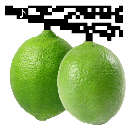
How To Familiarize Yourself With Lime
Lime has been verified on Windows 2000 and later (including Windows 10/11) and on Mac OSX 10.4(Tiger) to 10.14(Mojave);
(it will NOT work on Mac OSX 10.15 or later because Apple have, unhelpfully, dropped support for 32 bit applications).
We hope you will install Lime and experiment with it for a few hours. Here are some suggestions:
- Run Lime and open the pieces in Lime’s Examples folder.
- Print out or acquaint yourself with the Lime User’s Manual. Do its step-by-step example, and skim the rest of the manual.
Aquaint yourself with the Lime Manual Addendum.
- Practice using Lime’s Record option with your MIDI keyboard (if you have one).
- Experiment with the Parts and Voices option. Create and delete parts, reorder them, notate two voices together on one staff, stop and start printing voices at various points in your piece, and make a percussion staff.
- Group Select notes and change their articulation or accidentals.
- Add key or clef changes in several places at once with Group Select. Use This Staff Only in the Key and Clef dialogs.
- Add text and line annotations. Play with the Leave Space annotation control.
- Copy a text annotation, then Group Select notes and Paste to all the notes at once. See how Page and Staff anchoring (Annotation->Annotation Placement.) affects Multiple Paste.
- Use Duplicate At Each System to label your staves.
- Open two Lime pieces at once; copy and paste between them. Start building up a single page Lime piece with useful stuff to copy to other pieces.
- Enter all the notes for a score, then use the Notation Contexts option to create parts. Change a note in a part notation context, then look at the updated score.
- See how Only In Score and All Notation Contexts affect appearance of annotations in score and parts. Experiment with Duplicate Part Label.
- Experiment with piano tablature. Enter a piano score in standard notation, then use the Parts and Voices option to convert it to piano tablature notation.
- Create a guitar piece that has notes in standard notation on one staff, and guitar tablature on another. Copy and paste between the staves; make any necessary corrections to Lime’s automatic fingering.
- Experiment with Parameters. Try the microtonal accidentals in the Special Accidentals option. Perhaps define some new accidentals for yourself using Parameters.
- Copy music excerpts from Lime to Microsoft Word. Use Copy Rectangle in Lime, then Paste Special in Microsoft Word or equivalent. The music can be resized in Word, but not, of course, edited.
- Scan sheet music using SharpEye Music Reader or Musitek SmartScore; correct any rhythm errors, then use Lime’s Import MusicXML (or NIFF) to import the scanned music.
- Use the Hear option to listen to your music and follow it on the page. Hear can be used for play-along.
- Use Voice->Voice on Channel to assign voices to midi channels and specify the instruments to use.
- Write a piece in the style of Mozart.☺
Forward to What’s New in Lime
Up to CERL Sound Group Index
Send email to lime.uk@virginmedia.com
for consultancy.
Please Donate to the Development of Lime for the Blind and Partially Sighted, if you use it regularly.